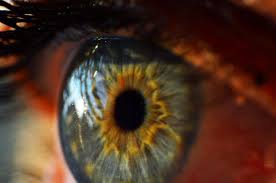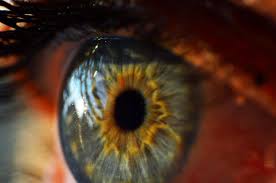
The manner in which stem cells or human corneal stromal cells taken from the cornea of a healthy donor can be mixed along with alginate and collagen for creating a solution which is printable and is called a ‘bio-ink’ has been shown in the
proof-of-concept research which was published as a report in Experimental Eye Research on Wednesday.
The shape of a human cornea was successfully formed by the extrusion of the bio-ink in concentric circles with the use of a simple low-cost 3D bio-printer. The report said that the the time taken to print it was less than 10 minutes.
The stem cells were then shown to culture—or grow.
“Many teams across the world have been chasing the ideal bio-ink to make this process feasible. Our unique gel—a combination of alginate and collagen—keeps the stem cells alive whilst producing a material which is stiff enough to hold its shape but soft enough to be squeezed out the nozzle of a 3D printer,” Che Connon, professor of tissue engineering, who led the work, at Newcastle University said.
“This builds upon our previous work in which we kept cells alive for weeks at room temperature within a similar hydrogel. Now we have a ready to use bio-ink containing stem cells allowing users to start printing tissues without having to worry about growing the cells separately, he said.
A patient’s unique specifications could be matched by the cornea that is built was also shown by the scientists who included the first author and PhD student Abigail Isaacson from the Institute of Genetic Medicine, Newcastle University.
An actual cornea was originally used to take the dimensions of the printed tissue. Matching the size and shape of the requirement according to a patient’s eye is possible by first scanning the eye of the patient and then making use of the data for a rapid printing of an artificial cornea.
“Our 3D-printed corneas will now have to undergo further testing and it will be several years before we could be in the position where we are using them for transplants,” Connon added.
“However, what we have shown is that it is feasible to print corneas using coordinates taken from a patient eye and that this approach has potential to combat the world-wide shortage,” he said.
The cornea is the outermost layer of the human eye and this part of the eye has a critical role in enabling the focusing of the vision of an eye. The number of corneas that are available for transplantation is in serious shortage. There are about 10 million people globally who need surgery to stop the process of corneal blindness because of the fall out of diseases such as trachoma - an infectious eye disorder.
Additionally, corneal scarring resultant from burns, lacerations, abrasion or disease is the cause of total blindness for almost 5 million people.
(Source:www.livemint.com)
proof-of-concept research which was published as a report in Experimental Eye Research on Wednesday.
The shape of a human cornea was successfully formed by the extrusion of the bio-ink in concentric circles with the use of a simple low-cost 3D bio-printer. The report said that the the time taken to print it was less than 10 minutes.
The stem cells were then shown to culture—or grow.
“Many teams across the world have been chasing the ideal bio-ink to make this process feasible. Our unique gel—a combination of alginate and collagen—keeps the stem cells alive whilst producing a material which is stiff enough to hold its shape but soft enough to be squeezed out the nozzle of a 3D printer,” Che Connon, professor of tissue engineering, who led the work, at Newcastle University said.
“This builds upon our previous work in which we kept cells alive for weeks at room temperature within a similar hydrogel. Now we have a ready to use bio-ink containing stem cells allowing users to start printing tissues without having to worry about growing the cells separately, he said.
A patient’s unique specifications could be matched by the cornea that is built was also shown by the scientists who included the first author and PhD student Abigail Isaacson from the Institute of Genetic Medicine, Newcastle University.
An actual cornea was originally used to take the dimensions of the printed tissue. Matching the size and shape of the requirement according to a patient’s eye is possible by first scanning the eye of the patient and then making use of the data for a rapid printing of an artificial cornea.
“Our 3D-printed corneas will now have to undergo further testing and it will be several years before we could be in the position where we are using them for transplants,” Connon added.
“However, what we have shown is that it is feasible to print corneas using coordinates taken from a patient eye and that this approach has potential to combat the world-wide shortage,” he said.
The cornea is the outermost layer of the human eye and this part of the eye has a critical role in enabling the focusing of the vision of an eye. The number of corneas that are available for transplantation is in serious shortage. There are about 10 million people globally who need surgery to stop the process of corneal blindness because of the fall out of diseases such as trachoma - an infectious eye disorder.
Additionally, corneal scarring resultant from burns, lacerations, abrasion or disease is the cause of total blindness for almost 5 million people.
(Source:www.livemint.com)














